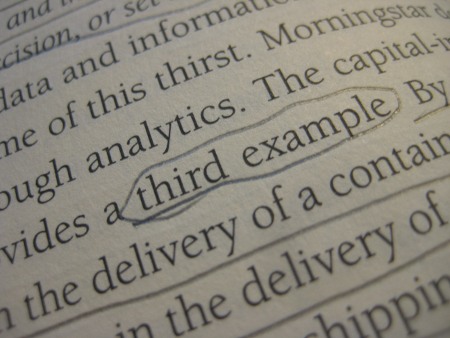Books and Notes
Tags: books
Take notes in and around the books you read, or you’ll lose most of the interesting bits in a very short period of time. (And please don’t tell me that you “aren’t a reader.” It’ll just make me sad.)
There’s a book called How to Read a Book. It’s thick. The authors had serious intentions of improving the quality of reading. I respect that, but with a single eyebrow raised, I first thought “learn how to read a book so you can learn how to read a book from the book Learn How to Read a Book.” Childish of me. I hope they had some fun during the editing process with a dummy draft:
How to Read a Book You’re doing it now. Keep going! [page break] Excellent, you’ve found us over here. That’s about it: left to right, top to bottom.
In fact, that’s the problem they’re trying to solve. Most of us measure reading skill in speed from start to finish with little attention paid to comprehension or retention.
Someone much smarter convinced me to pick up a copy in 2010 despite my initial skepticism. Of all the tips, techniques, and suggestions, taking notes changed my retention and comprehension the most. Marking notes in the margins felt criminal at first, but it’s now so fundamental to my process that I rarely read anything if I don’t have a pencil.
Amazon’s used marketplace is a great source of deals that keeps my reading habit below the expense reporting radar in our family budget. Through this informal research channel, I know that people fall into two camps with notes and markings: either no marks at all, or everything is underlined haphazardly, often with a yellow highlighter or ink pen.
One interesting fact about the over-enthusiastic underliners: their notes often stop entirely by chapter 3, and that means they missed most of the good stuff. I’ve also learned that some Amazon sellers don’t share my definition of “Used - Like New”, but that’s a different soap box rant.
For the sake of note-free readers and over-highlighting readers alike, here are just a few tips that have served me well.
Use a Pencil
Pencil is erasable. That may come in handy.
Underline judiciously.
Underlining entire paragraphs is a complete waste of time. Quit it. Is the entire paragraph really profound? Will it be worth reading again in its entirety when skimming the book in the future?
Are the underlined words key words that require definition, or are they just words that you happen to recognize and you get swept up in the excitement? I owned a book where the previous owner was probably a “Data Manager” because every occurrence of the words “Data Manager” in the first three chapters was circled. Not helpful.
Concisely underline the interesting and the new.
Use vertical lines to highlight paragraphs
Maybe there’s a passage that only makes sense in the context of one or more full paragraphs, and you want to find it again on your next time through the book. Use vertical lines in the margin to highlight those paragraphs rather than tediously underlining everything. Think about the time it would take to draw a vertical line next to this paragraph rather than underlining everything within the paragraph:
Now, go read a book.

